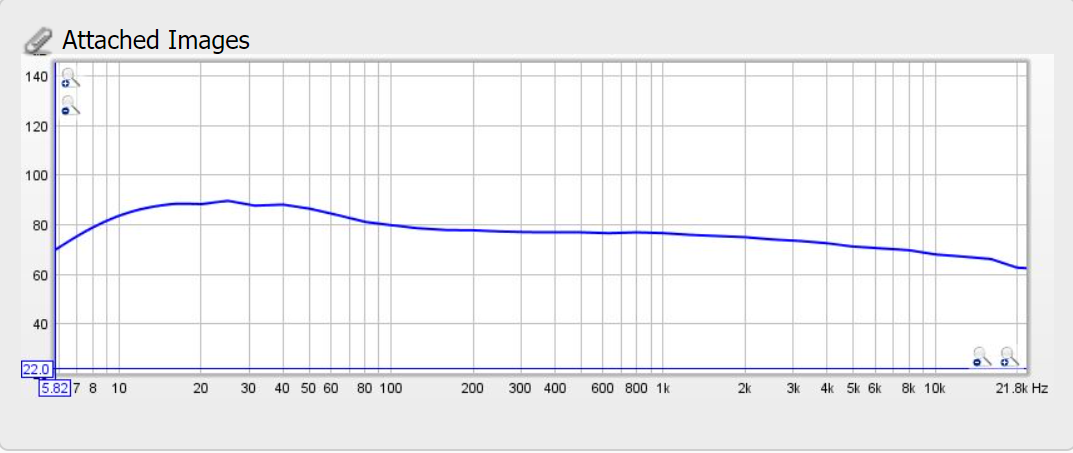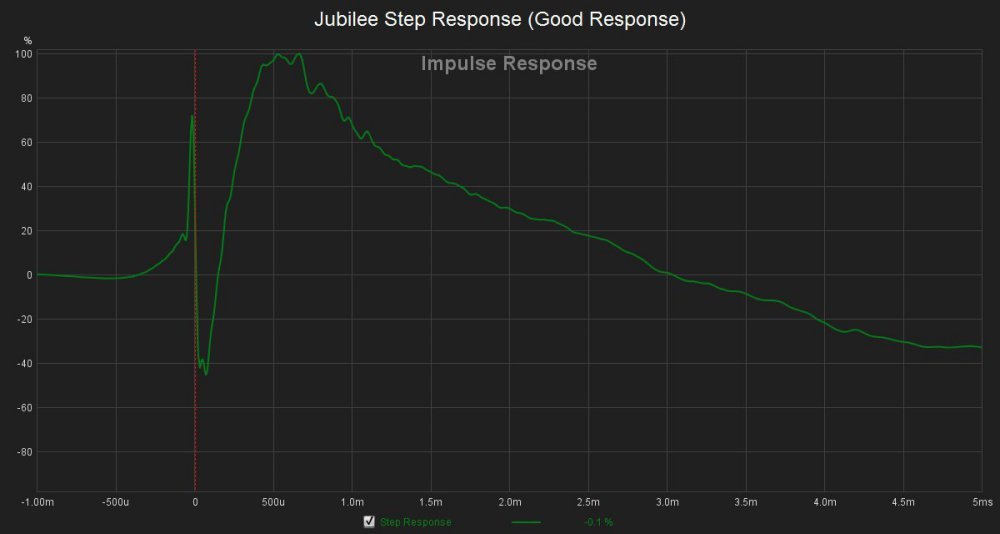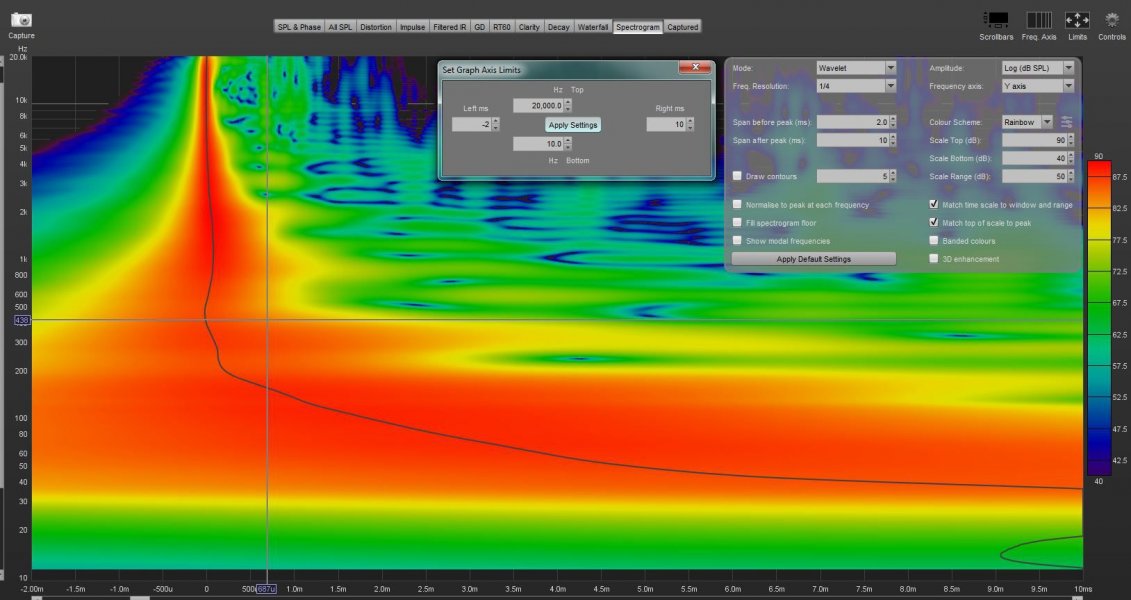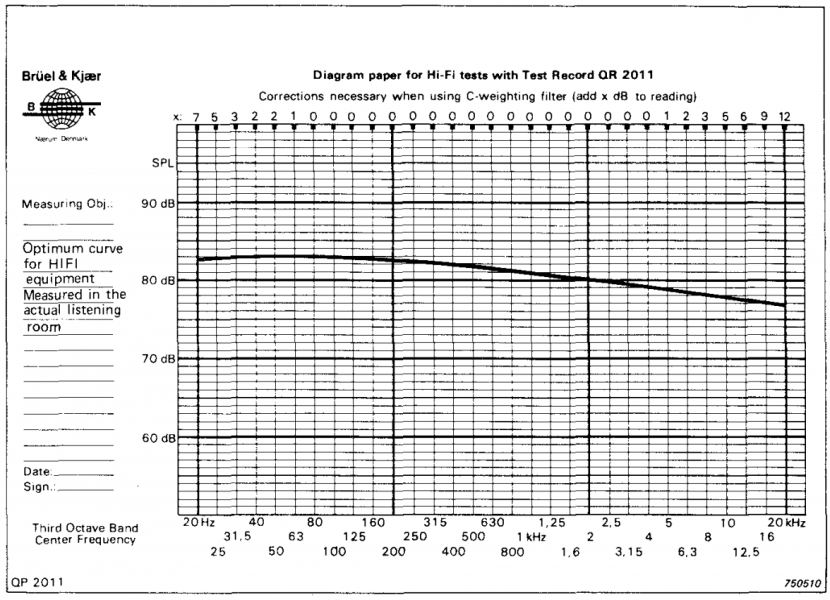Digital only system ?DSP is not easy to do right, any more than it is easy to do analog right. Dialing in a cartridge and the upstream phono preamp settings isn’t straightforward and takes specialized measurement gear to nail, but is clearly worth the effort, and the same is true for dialing in DSP. In the vast majority of systems judicious DSP, particularly below 100hz, makes an enormous difference. In most systems correcting for time and phase alignment issues, including well above 100hz, also materially improves things.
That being said, in all cases you “lose something” with DSP, and for me the question has been “do the obvious large gains offset the obvious losses?”
FWIW I first got into DSP processing when using a Meridian 861 in a purpose built two channel room with big Infinity ribbons, big Krell LAT speakers, and AR/VTL/Aesthetix top of the line upstream gear. I later used heavily modified DEQX gear upstream of custom line arrays with each section driven by custom built 300B amps and then later BAT monoblocks. I currently switch between heavily tweaked convolution filters running through HQ Player and Fab Filter Pro running through J River, both running on purpose built servers. I occasionally use Trinnov or Dirac processing instead. In all cases I find the results more “different” than one being superior to another. In all cases I have found that the experimentation journey made me a lot more knowledgeable about what drives my listening joy in my room given my hearing and my preferences. The same is true for room treatments, but that’s for another thread.
Does DSP belong in State of the Art Systems?
- Thread starter musicfirst1
- Start date
You are using an out of date browser. It may not display this or other websites correctly.
You should upgrade or use an alternative browser.
You should upgrade or use an alternative browser.
I too have played around with the Dirac Live and Audessy DSP systems. To me In my home theater system the results I get with both Dirac Live and Audessy are variations in sound quality not necessarily better. I’ve also experimented with the DSP in Roon and with the software included with my Aries G2. None of the above systems comes close to what Wavelet can do.
The Wavelet DSP is many times more sophisticated and much easier to use. It can be adapted for use to any speaker system but Mr. Duddleston needs one of the speakers sent to him for successful programming. I believe a couple of other manufacturers are now using Wavelet with their speaker systems as well.
Of course none of this means that absolutely brilliant results can’t be obtained by many owners of conventional speaker systems and amplifiers as well. I’m not throwing stones at Wilson, Magnepan, Revel, Vandersteen, or any of the great speaker systems I didn’t mention. I’ve owned and heard many of these systems and have enjoyed every minute I’ve listened to them whether in my home, at friend’s homes, audio stores, and shows. To me (despite personal preferences) it would be difficult to find an audiophile speaker system, amplifier, or front end these days that doesn’t do well by the music if set up properly.
Mr. Dudleston’s Vs, Aries, and Valour speaker systems are designed with the Wavelet Processor from the start. These speaker systems are designed to be multiamped from their inception. My Vs use two CODA 16 stereo amps one each channel for the treble through mid bass ranges of my speakers. Bill Duddleston incorporates ICE type amplifiers for the bass and sub bass. Wavelet takes care of sonic phenomena like phase, gain, time, etc. Wavelet records the two chirps per channel it makes and instead of having an internal CPU try to apply the algorithms, the data is sent to the Boehmer server in Switzerland where the computations are made and then sent back for application via Wavelet to the amplifiers and drivers. The whole computation process usually takes less than ten minutes and maybe 30 minutes total if one includes setting up the microphone. Once this process is completed the microphone is disconnected and put away unless one switches components, listening chair position, or speaker position.
Wavelet also includes an web based application for PCs, Macs, iPhones, iPads and any other type of device that can display the application. With it one can control the volume, balance, DSP, anti aliasing if using the included DAC ( which sounds very good it’s just not a Lampizator), the contour and many other aspects. The contour setting is one of the most powerful ad one can adjust the brilliance, treble, mid bass, bass, and sub bass. It gives one incredible control over the final output of the loudspeaker. One doesn’t have to use the Contour control at all. But once you learn a few tricks one can make poor recordings sound quite a bit better if one wants or you can set it and forget it. One can actually save up to 10 Contour settings in the memory. Then you could have a different Contour setting for Rock, Big Band, Classical, Jazz, or maybe low level listening sessions when the kids or wifey is trying to sleep.
If you haven’t heard what the Legacy Audio speakers with Wavelet can do you’re in for a treat.
The Wavelet DSP is many times more sophisticated and much easier to use. It can be adapted for use to any speaker system but Mr. Duddleston needs one of the speakers sent to him for successful programming. I believe a couple of other manufacturers are now using Wavelet with their speaker systems as well.
Of course none of this means that absolutely brilliant results can’t be obtained by many owners of conventional speaker systems and amplifiers as well. I’m not throwing stones at Wilson, Magnepan, Revel, Vandersteen, or any of the great speaker systems I didn’t mention. I’ve owned and heard many of these systems and have enjoyed every minute I’ve listened to them whether in my home, at friend’s homes, audio stores, and shows. To me (despite personal preferences) it would be difficult to find an audiophile speaker system, amplifier, or front end these days that doesn’t do well by the music if set up properly.
Mr. Dudleston’s Vs, Aries, and Valour speaker systems are designed with the Wavelet Processor from the start. These speaker systems are designed to be multiamped from their inception. My Vs use two CODA 16 stereo amps one each channel for the treble through mid bass ranges of my speakers. Bill Duddleston incorporates ICE type amplifiers for the bass and sub bass. Wavelet takes care of sonic phenomena like phase, gain, time, etc. Wavelet records the two chirps per channel it makes and instead of having an internal CPU try to apply the algorithms, the data is sent to the Boehmer server in Switzerland where the computations are made and then sent back for application via Wavelet to the amplifiers and drivers. The whole computation process usually takes less than ten minutes and maybe 30 minutes total if one includes setting up the microphone. Once this process is completed the microphone is disconnected and put away unless one switches components, listening chair position, or speaker position.
Wavelet also includes an web based application for PCs, Macs, iPhones, iPads and any other type of device that can display the application. With it one can control the volume, balance, DSP, anti aliasing if using the included DAC ( which sounds very good it’s just not a Lampizator), the contour and many other aspects. The contour setting is one of the most powerful ad one can adjust the brilliance, treble, mid bass, bass, and sub bass. It gives one incredible control over the final output of the loudspeaker. One doesn’t have to use the Contour control at all. But once you learn a few tricks one can make poor recordings sound quite a bit better if one wants or you can set it and forget it. One can actually save up to 10 Contour settings in the memory. Then you could have a different Contour setting for Rock, Big Band, Classical, Jazz, or maybe low level listening sessions when the kids or wifey is trying to sleep.
If you haven’t heard what the Legacy Audio speakers with Wavelet can do you’re in for a treat.
I am currently all digital, but with my next iteration I may add a turntable back into my mix as I miss the "liquidity" of my Koetsu Rosewood Signature on a 45. I'm also considering creating a second system that is closer to all analog (likely a small footprint mains/sub setup with an outboard JL Audio sub crossover in a room converted for solely two channel use.)Digital only system ?
I have a SOTA Sapphire with Audioquest cartridge that I feed into my CODA 07x preamp.I am currently all digital, but with my next iteration I may add a turntable back into my mix as I miss the "liquidity" of my Koetsu Rosewood Signature on a 45. I'm also considering creating a second system that is closer to all analog (likely a small footprint mains/sub setup with an outboard JL Audio sub crossover in a room converted for solely two channel use.)
But someday I’d line to have an all analog system with Magnepans.
I don’t prefer analog vs digital both systems can sound awesome. And some of my favorite LPs will never be digitized. Audio is a great hobby.
I've ordered a MiniDSP 2x4hd to play with. I'm going to play with only the crossover fuction as well as the timing/delay functions.
It will sit between my DAC/PRE and one pair of RCAs going to my mains and the other pair going to my subs.
I'm hoping/expecting better integration between my subs and mains, along with a audible insertion loss of the unit itself.
Has anyone gone down this road? Are there devices on the market that minimize the negative impact of this pursuit?
I posted this in the general forum because I know there are people who would never read the DSP forum...
I guess I'm more curious what determines or defines a playback system to be "state-of-the-art" caliber. Is it price, bling, performance, convenience, or some combination thereof? Along that same vein, I guess I'm also curious who among us is truly qualified to make that determination and how is that determined?
Of course, then there's the question, which came first? The "state-of-the-art" playback system or the one truly qualified.
Yes having owned or owning the most technical advanced/most expensive system certainly helps your chances of qualifying. How else would anything you say be more than guesswork. I alway find it somewhat funny when people that have only owned “ giant killer” equipment want to tell me what is best, something you see consistently on Audiogon, but thankfully rarely on WBF. I prefer the advice of people like ddk and MikeL that have run the gauntlet of most things audioI guess I'm more curious what determines or defines a playback system to be "state-of-the-art" caliber. Is it price, bling, performance, convenience, or some combination thereof? Along that same vein, I guess I'm also curious who among us is truly qualified to make that determination and how is that determined?
Of course, then there's the question, which came first? The "state-of-the-art" playback system or the one truly qualified.
I cannot presume there is an equivalence in that phrase."most technical advanced/most expensive system"
No Kal, but with more expensive you have a fair chance of getting state of the art, no guaranty of coarseI cannot presume there is an equivalence in that phrase.
A "state-of-the-art" set up has very little to do with the thickness of your wallet and all to do with audio knowledge. Put 1 million $ gear in the hands of an audiophool and a bad room and it will still suck. Put decent gear in a good room and chances are, that it will sound good.I guess I'm more curious what determines or defines a playback system to be "state-of-the-art" caliber. Is it price, bling, performance, convenience, or some combination thereof? Along that same vein, I guess I'm also curious who among us is truly qualified to make that determination and how is that determined?
Of course, then there's the question, which came first? The "state-of-the-art" playback system or the one truly qualified.
For some pointers and to verify that you are on the right course, you will need measurement gear, mic + REW and of course a DSP, preferable with FIR filters.
Get your frequency amplitude in the vecinity of this

With a step response like this

and a spectrogram like this

Coupled with a well treated room with a good balance of absorbers and diffusors and you are a happy camper.
Last edited:
I love your frequency response curve. It's quite similar to the famed B&K curve published long ago..A "state-of-the-art" set up has very little to do with the thickness of your wallet and all to do with audio knowledge. Put 1 million $ gear in the hands of an audiophool and a bad room and it will still suck. Put decent gear in a good room and chances are, that it will sound good.
For some pointers and to verify that you are on the right course, you will need measurement gear, mic + REW and of course a DSP, preferable with FIR filters.
Get your frequency amplitude in the vecinity of this
View attachment 71636

I wish more people would pay more attention to this. If you don't get frequency response right, why bother with a high end system at all?
The Bruel and Kjær curve is from the 70's and show the same tendency, a more or less linear line tilting down to the right. More modern studies from Floyd Toole and Harman have found this.I love your frequency response curve. It's quite similar to the famed B&K curve published long ago..
View attachment 71639
I wish more people would pay more attention to this. If you don't get frequency response right, why bother with a high end system at all?

Last edited:
The Bruel and Kjær curve is from the 70's and show the same tendency, a more or less linear line tilting down to the right. More modern studies from Floyd Toole and Harman have found this. View attachment 71640
Where is Amir now that we need him??
It's not a real measurement, but a target curve that in most "normal" rooms will sound pleasantly balanced to the human ear. If you measured your speaker more than a few feet away, then the measurement would be more ragged, with dips and peaks, because of room reflections, so gating (or smoothing) on the measurement would be needed, but that would exclude measuring the bass frequencies. For smoothing I would recommend psycho acoustic smooting.@shlager, would you mind telling me what smoothing you used for the FR graph?
Anyone interested in DSP, actually I’ll correct that; anyone interested in achieving high fidelity sound needs to read Mitchco’s articles on the Audiophile Style forum about Acourate and Audiolense. He has looked into DSP extensively and is of the view that those two software solutions are streets ahead of all other DSP implementation options. Anyone who makes pronouncements about DSP without taking on board Mitch’s findings - both objective and subjective - is critically uninformed.
Read the articles I refer to in my previous post. You’ll get very excited!Everyone is talking dsp for sub woofers. I was hoping to use a dsp to gain parameter of frequency, slope and gain to then have a passive crossover built to allow biamping of my speakers. Question for me is. Can one biamp a speaker and get performance that exceeds a single amp. Consider my horn probably crossess with the woofers in the 2400 hz regions. My woofers actually handle a fair amount of midrange information.
How do the newer active speakers with DSP built-in like kii3, Dutch and Dutch, Grimm etc fit into this discussion? If they can effectively use DSP to remove the room from the equation using things like cardioid dispersion, isn’t that a benefit for users who can’t do much to treat the listening area?
Kal, I believe you reviewed Dutch and Dutch? I would be interested in your rhoughts.
Kal, I believe you reviewed Dutch and Dutch? I would be interested in your rhoughts.
as the long time poster boy for an all analog signal path, i've now gone over to the dark side of dsp.
no; not in my 2-channel room. in my Home Theater. sure; in HT everyone is using dsp for multi-channel movie soundtracks, and maybe some music only on the side. no big deal. but i've just purchased a super uber Trinnov Altitude 16 dsp processor. and i plan on listening to music in my Home Theater room for the first time. i want to see how close dsp, done right, can get to the realism of ultimate analog 2-channel.
my Home Theater room is not nearly as over-the-top as my 2 channel room, so it won't be able to go head to head in terms of speaker and amplification quality. but it won't be chopped liver. and those who think multi-channel executed correctly can surpass high level 2 channel can see how that goes.
the audio side of the system will use streaming Roon, an Oppo 203 disc player, plus a Kaleidascape movie server as sources, the Trinnov for the processor, a 9.3.6 surround speaker set-up with 3 Funk Audio 18.0 subwoofers. i will have to do some room treatments in that room to get it right, and i plan on employing a professional set-up guy to optimize it once everything is in place.
will the dsp experience compete for dedicated music-only listening? or will it still be movies and Foley stages only?
i'm hoping that this set-up takes me to a new musical place not otherwise accessible.
note; 16 years ago, i built my 2 channel room as a 5.1 music room, with 5.1 multi-channel SACD's as my source. i made the room wide so i could have rear channels at the correct angles, put conduit in the floor for cables, then invested in the speakers and electronics to do it. 18 months later, when i realized my vinyl seriously kicked multi-channel's butt, i tore all of it out and did not look back.
that was zero dsp multi-channel that could not compete.
here i am again. with ultra dsp.
no; not in my 2-channel room. in my Home Theater. sure; in HT everyone is using dsp for multi-channel movie soundtracks, and maybe some music only on the side. no big deal. but i've just purchased a super uber Trinnov Altitude 16 dsp processor. and i plan on listening to music in my Home Theater room for the first time. i want to see how close dsp, done right, can get to the realism of ultimate analog 2-channel.
my Home Theater room is not nearly as over-the-top as my 2 channel room, so it won't be able to go head to head in terms of speaker and amplification quality. but it won't be chopped liver. and those who think multi-channel executed correctly can surpass high level 2 channel can see how that goes.
the audio side of the system will use streaming Roon, an Oppo 203 disc player, plus a Kaleidascape movie server as sources, the Trinnov for the processor, a 9.3.6 surround speaker set-up with 3 Funk Audio 18.0 subwoofers. i will have to do some room treatments in that room to get it right, and i plan on employing a professional set-up guy to optimize it once everything is in place.
will the dsp experience compete for dedicated music-only listening? or will it still be movies and Foley stages only?
i'm hoping that this set-up takes me to a new musical place not otherwise accessible.
note; 16 years ago, i built my 2 channel room as a 5.1 music room, with 5.1 multi-channel SACD's as my source. i made the room wide so i could have rear channels at the correct angles, put conduit in the floor for cables, then invested in the speakers and electronics to do it. 18 months later, when i realized my vinyl seriously kicked multi-channel's butt, i tore all of it out and did not look back.
that was zero dsp multi-channel that could not compete.
here i am again. with ultra dsp.
Last edited:
Similar threads
- Replies
- 95
- Views
- 15K
- Replies
- 207
- Views
- 44K
- Replies
- 3
- Views
- 2K
| Steve Williams Site Founder | Site Owner | Administrator | Ron Resnick Site Owner | Administrator | Julian (The Fixer) Website Build | Marketing Managersing |






